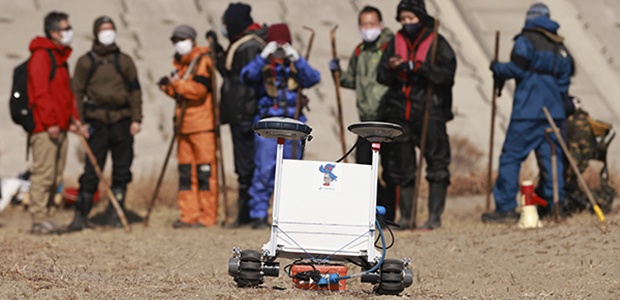The Human Element of AI for Humanitarian Assistance and Disaster Response

Research members of National Institue of Technology, Sendai College conduct a ground-penerating radar robot to search for missing people of the 2011 Great East Japan Earthquake and Tsunami at Yuriage beach in Natori, Miyagi Prefecture on March 11, 2021, on the 10th anniversary of the disaster. The robot, installed with AI (artificial intelligence), can be operated autonoumously driving and can detect human bones located in the ground 2 meters deep. (The Yomiuri Shimbun via AP Images )
AI can play an important role in Humanitarian Assistance and Disaster Response (HADR). To ensure AI’s success on such use cases (and for all users), it is critical to consider its human element: the different stakeholders in the HADR environment, their distinct goals, pain points, and design needs, how they’ll interact with AI technologies in the field, how to apply AI technologies fairly and ethically, and more. Put differently, we must emphasize human-centered design, think deeply about human computer interaction, and practice responsible AI. This half-day minisummit will feature group discussion as well as speakers from academia, government, military, NGOs, and the technology sector.

